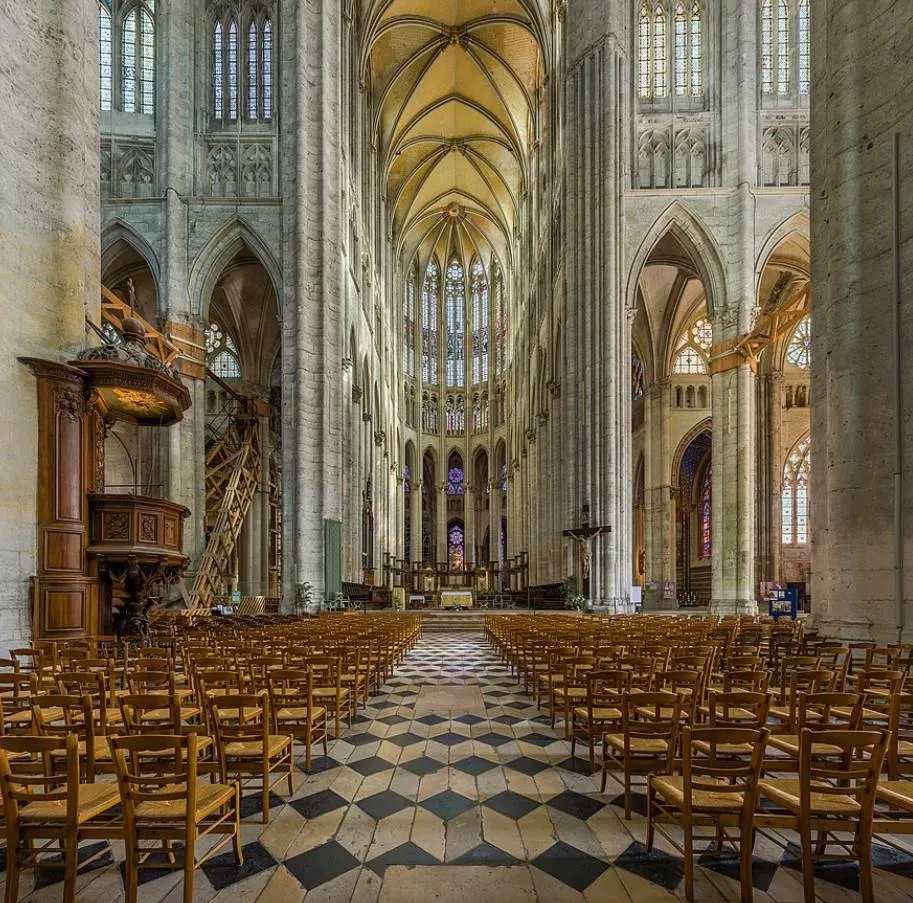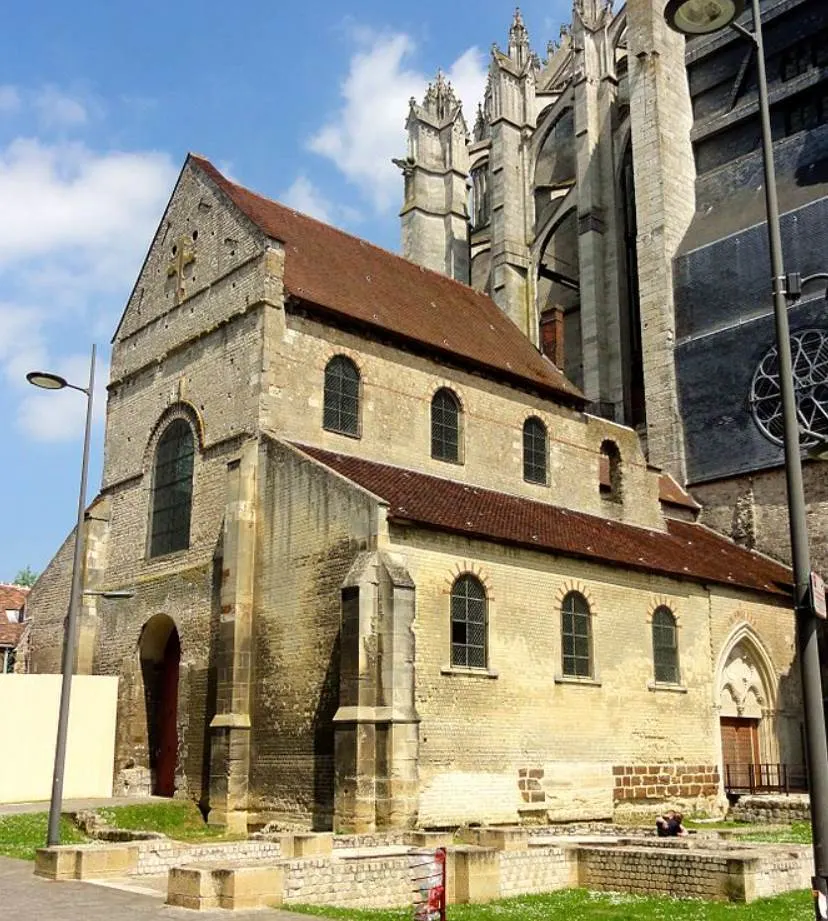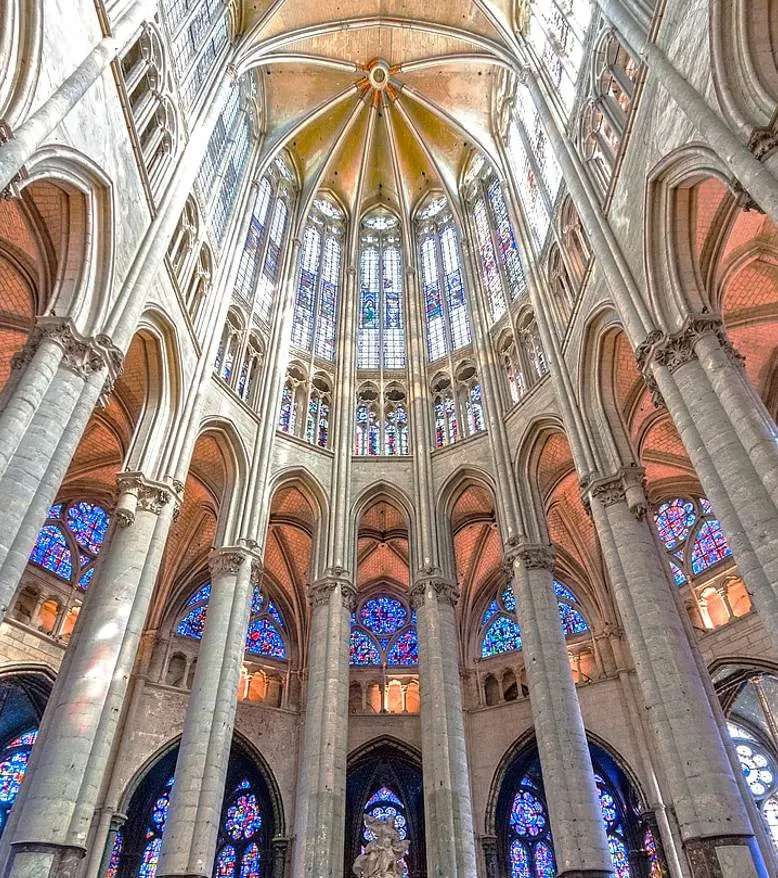One of the most remarkable examples of Gothic architecture can be found in a relatively small town in northern France. This fascinating church has an interesting history and holds an amazing record (and lost one as well).
Let’s take a closer look at some of the most interesting facts about Beauvais Cathedral, an astounding Gothic church with a couple of interesting stories to tell.
1. It’s located in a town with the same name just north of Paris
Beauvais Cathedral is located in Beauvais, a small town situated in the Oise department in Northern France. The town itself has a population of fewer than 60,000 inhabitants which means that this remarkable cathedral is its most prominent landmark.
Beauvais is located about 75 kilometers (47 miles) north of the heart of Paris and at a similar distance south of Amiens and east of Rouen. Both these cities have Gothic cathedrals that were built around the same period.

2. The construction started in the first half of the 13th century
The 10th-century Romanesque basilica that was located in this location was replaced with the current Gothic structure in the 13th century. The main reason was a series of fires that pretty much destroyed the wooden roof of the old church.
The first stone was laid in 1225 and the magnificent Gothic choir of the church was completed in the year 1272. This was also the year that the cathedral was consecrated even though it was far from complete.

3. The cathedral still holds an amazing record today
One of the most interesting facts about Beauvais Cathedral is that it features the highest Gothic choir of any church in the world. This is the epitome of Gothic architecture, a style that aimed to reach the heavens above resulting in tall spires and pointed windows.
The nave has a height of 47.5 meters (156 feet) and the vault in of the choir reaches a height of 48.5 meters (159 feet), the highest of its kind in the world.
To give some reference to his remarkable record, the nave of the largest church in the world, St Peter’s Basilica in Rome, has a height of 46.2 meters (152 feet). This emphasizes how amazing this feature of Beauvais Cathedral is.

4. The building was once the highest man-made structure in the world

So why did the engineers of the cathedral of Beauvais attempt to build such a huge structure? The answer lies in the construction of a similar structure in a city north of Beauvais, the Cathedral of Amiens.
Just like the “Race to the Sky” of the 1920s in New York City between the Chrysler Building and the Empire State Building, a similar unofficial competition was held in 13th-century France. The Cathédrale Saint-Pierre de Beauvais won this race as the nave of Amiens Cathedral is “only” 42 meters (138 feet) high.
The transept of the church was built between 1500 and 1543 and an enormous central tower was added to the church as well. This had a height of 153 meters (502 feet) which made it the tallest building in the world in 1569.
unfortunately, this tower collapsed in 1573 which means the cathedral only held this record for 4 years.

5. It was never completed and is adjoined by a Romanesque structure
The French Revolution wreaked havoc in France and many churches were demolished or severely damaged. French architect Eugène Viollet-le-Duc (1814-1879) restored many of these during the 19th century, including but not limited to the Notre Dame de Paris and Sainte Chapelle.
This prominent figure of French architecture was one of the greatest admirers of the Gothic choir of Beauvais Cathedral and referred to it as the “Parthenon of French Gothic.”
unfortunately, the cathedral was never completed and this can be seen on the western end of the structure which still features the original 10th-century Romanesque building.
Both sections of the church are referred to as the “Basse Œuvre” or “Lower Work,” and the “Nouvel-Œuvre” or “New Work” which refers to the Gothic structure. Here you can see the difference in architectural styles of the Middle Ages.

More interesting facts about Beauvais Cathedral
6. The official name of the cathedral is “Cathédrale Saint-Pierre de Beauvais.” It’s the official seat of the Bishop of Beauvais, Noyon, and Senlis.
This encompasses the department of Oise just north of Paris and is, in turn, a department of the larger “Archdiocese of Reims” of which Reims Cathedral is the main seat.
7. One of the most significant events following the completion of the Gothic choir in the late 13th century was the collapse of part of the vaulting of this choir. This happened in the year 1284 and came as a shock to the engineers of the Gothic period.
Because of this devastating event caused by buttresses that were too thin (in an attempt to pass more light into the church), the race to build the tallest church abruptly ended and the subsequent churches that were built in France were much smaller.
The choir of Beauvais Cathedral, however, was rebuilt at the same monumental scale as the original structure and still holds the record for being the highest in the world.

8. The 16th-century transept provides access to the 7 chapels of the cathedral. Many of these chapels feature original medieval stained glass windows that were created between the 13th and 15th centuries. The choir itself also features amazing stained glass windows.
9. The church has a width of 67.2 meters (220 feet) and a length of 72.5 meters (238 feet) but was supposed to be much bigger. The location of the Romanesque structure called the “Basse Œuvre of Beauvais” was supposed to become the extension of the nave to the west.
Following the collapse of the central tower in the year 1573, little structural changes were made and the work completely came to a halt in the year 1600.
10. One of the chapels inside the church features a medieval mechanical clock that was built around the 14th and 15th centuries. This clock is completely original and is considered to be one of the oldest of its kind in Europe.
The epitome of astronomical clocks can be found inside the church as well and is referred to as the “Beauvais astronomical clock.” This immensely complicated work of art was created between 1865 and 1868 and features 52 dials.

